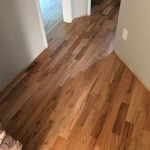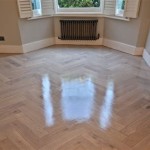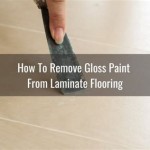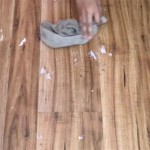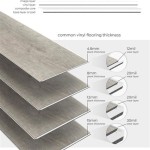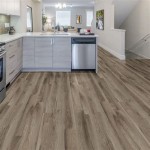Can You Waterproof Over Chipboard Flooring?
Chipboard flooring, a type of engineered wood, is widely used in homes and other buildings due to its versatility and affordability. However, it is not naturally waterproof, making it vulnerable to moisture damage. As a result, many homeowners wonder whether they can waterproof their chipboard flooring to protect it from spills, leaks, and other water-related incidents.
The short answer is yes, it is possible to waterproof over chipboard flooring. However, it is important to note that this is not a simple process and should only be attempted by experienced DIYers or qualified professionals. Waterproofing chipboard flooring requires careful preparation, proper materials, and meticulous execution to ensure long-lasting results.
To successfully waterproof over chipboard flooring, several essential steps must be followed:
1. Inspect the Floor
Before beginning the waterproofing process, it is crucial to thoroughly inspect the chipboard flooring for any damage or defects. Check for any cracks, gaps, or uneven surfaces that may compromise the waterproofing seal. If any issues are identified, they must be repaired or leveled before proceeding.
2. Clean the Floor
The chipboard flooring must be thoroughly cleaned to remove any dirt, dust, or debris that could interfere with the adhesion of the waterproofing materials. Use a vacuum cleaner or broom to remove surface debris, then mop the floor with a mixture of warm water and a mild cleaning agent. Allow the floor to dry completely before continuing.
3. Apply a Waterproof Primer
A waterproof primer is essential for creating a strong bond between the chipboard flooring and the waterproofing membrane. Choose a primer specifically designed for use on chipboard and apply it according to the manufacturer's instructions. Allow the primer to dry completely.
4. Install a Waterproof Membrane
The waterproofing membrane is the primary barrier that will prevent water from penetrating the chipboard flooring. There are various types of waterproofing membranes available, including liquid-applied membranes, sheet membranes, and peel-and-stick membranes. Select a membrane that is compatible with chipboard flooring and follow the installation instructions carefully.
5. Seal Joints and Edges
Once the waterproofing membrane is installed, it is crucial to seal all joints and edges to ensure there are no gaps or openings where water can seep through. Use a waterproof sealant compatible with the membrane and apply it generously around all edges, corners, and penetrations.
6. Install a Top Layer
After the waterproofing membrane is sealed, a top layer can be installed to protect it from wear and tear. This can be any type of flooring material, such as tile, vinyl, or laminate flooring. Ensure that the top layer is also waterproof or water-resistant to provide additional protection.
By following these steps carefully and using high-quality materials, you can effectively waterproof your chipboard flooring and protect it from moisture damage. However, it is important to note that no waterproofing system is foolproof, and it is still essential to minimize water exposure and clean up spills promptly to maintain the integrity of the waterproof barrier.

Tiling On Wooden Floors Part 4 Overboarding Bathroom Guru

How To Waterproof Particle Board Simple Guide Waterproofwiki

How To Waterproof Yellow Tongue Flooring

Designing With Versatility Using Chipboard In Interior Spaces
Tiling On Wooden Floors Part 4 Overboarding Bathroom Guru

Preparing A Chipboard Floor For Painting Property Home Survive France

How To Lay Chipboard Flooring Roofing Super Help Advice

Can You Lay Lvt On Chipboard Flooring Blog

Egger P5 V313 Flooring Grade Chipboard 2400 X 600 22mm Arnold Laver

Preparing A Chipboard Floor For Painting Property Home Survive France
See Also
